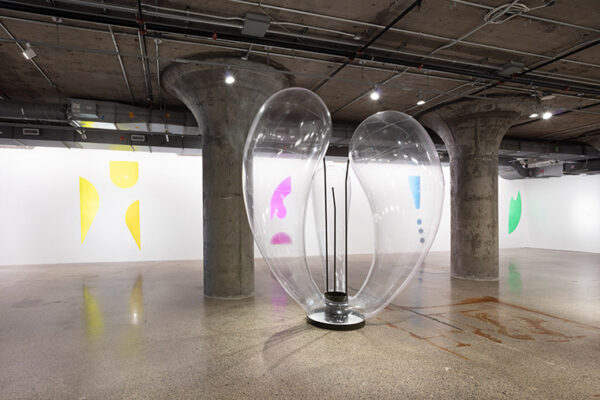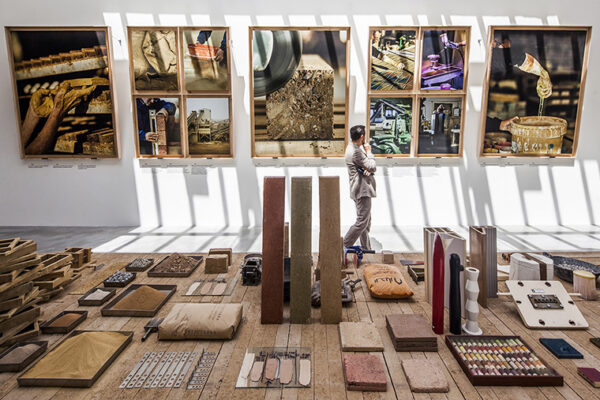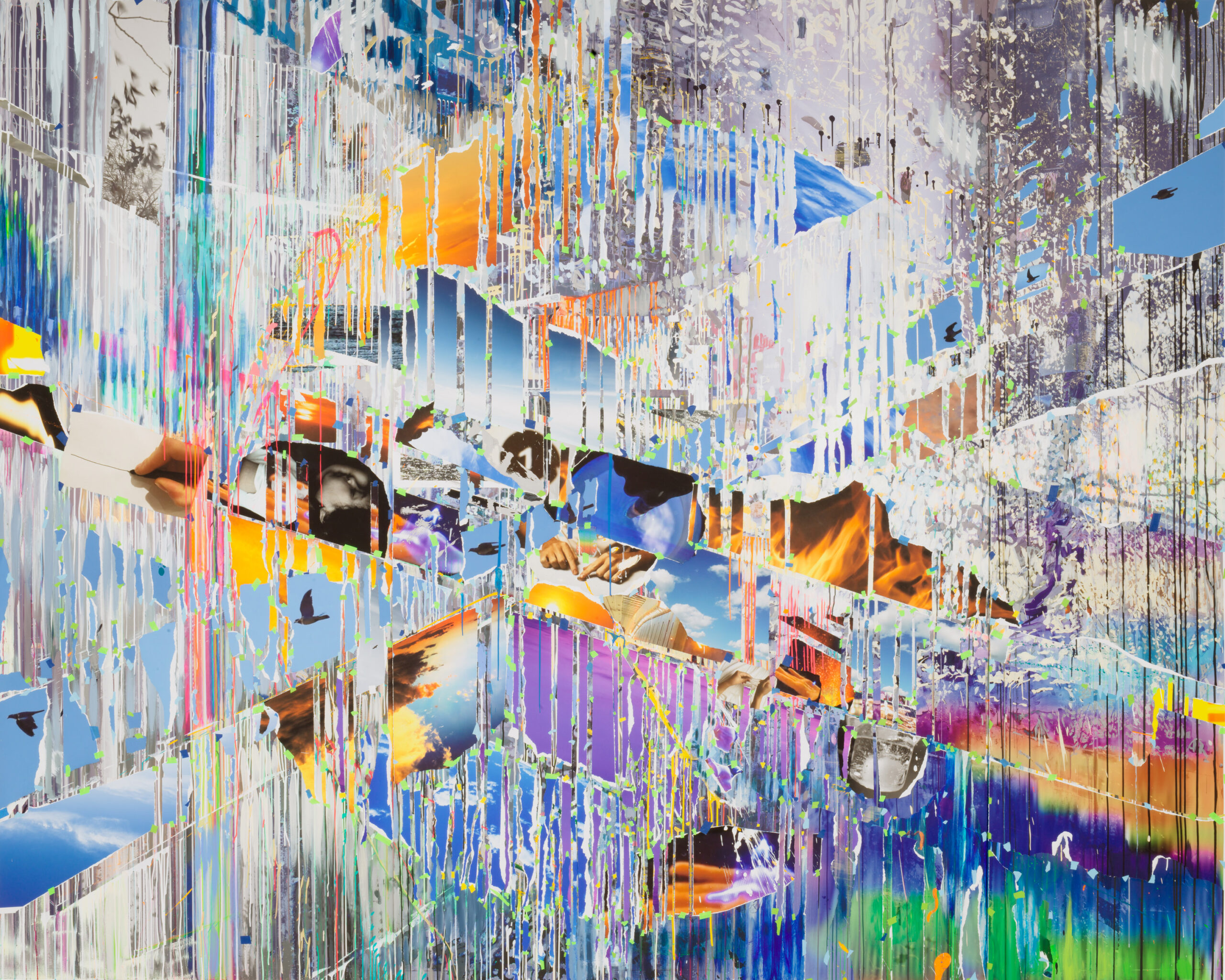
In 2014, Komal Shah visited the Whitney Biennial in New York. Entering the galleries, she was struck by two large abstract paintings.
“One was by the artist Laura Owens, the other by Jacqueline Humphries,” Shah remembered. The work was bold and muscular but also sly and playful. “It spoke to me. I was completely mesmerized.”
In the decade since, Shah has emerged as one of the most influential collectors in the United States. The Shah Garg Foundation, which she established with her husband, alumnus Gaurav Garg (BS ’88, MS ’90), aims to amplify the voices of women artists and artists of color through scholarship, exhibition and public engagement.
This fall, the Kemper Art Museum at Washington University in St. Louis will present “Making Their Mark: Works from the Shah Garg Collection.” Spanning nearly eight decades and featuring nearly 70 artists, the survey places leading contemporary practitioners in dialogue with an earlier generation of artists whose work anticipated current discussions of figuration and abstraction as well as identity and power.
“’Making Their Mark’ explores how women artists, especially those working in abstraction, pushed through societal and art-making conventions by embracing unique approaches to painting, craft techniques, uncommon materials, advanced technologies and eclectic formal vocabularies,” said Sabine Eckmann, the William T. Kemper Director and chief curator of the Kemper Art Museum.
“Many of these artists are widely celebrated,” Eckmann added. “Others are still underrecognized. Several have never before been exhibited in St. Louis. The Kemper Art Museum is honored to shine a light on their accomplishments.”
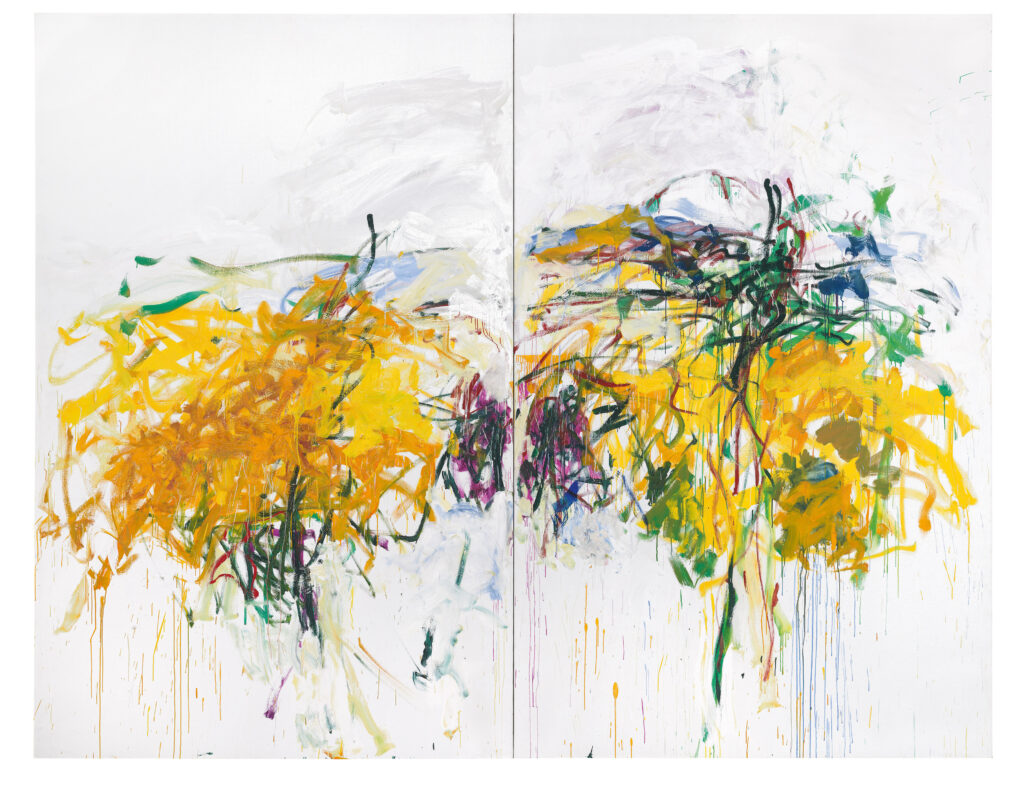
‘Urgency, vigor and brightness’
“Making Their Mark” is the largest exhibition that the Kemper Art Museum has ever presented. More than 80 artworks, many grandly scaled, fill the museum atrium and rotating exhibition spaces as well as three galleries typically dedicated to the permanent collection.
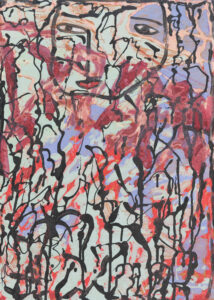
The opening section, “Gestural Abstraction,” features a remarkable untitled 1946 canvas by Janet Sobel. A self-taught Ukrainian émigré who began painting at age 45, Sobel helped pioneer the drip painting and the “all-over” composition — elements that Jackson Pollock would soon adopt. Also featured is a monumental diptych by Joan Mitchell, the final work completed before the artist’s death in 1992, which is presented alongside more recent abstractions by Katharina Grosse, Lorna Simpson and Mary Weatherford, among others.
“Mitchell had lung cancer, and yet she painted this heroic 12-foot canvas with urgency and vigor and brightness,” Shah said. “Almost every artist in the collection was influenced by her.”
The next section, “Painting and Technology,” explores the relationship between artistic practice and technological development. Owens, Humphries and Sarah Sze all combine the physicality of gestural painting with elements of digital culture. Melissa Cody, a fourth-generation textile artist, renders traditional Diné symbols in the blocky, pixilated style of early video games. (The weaving loom, a technology long associated with “women’s work,” helped give rise to binary code.) Also featured are two Faith Ringgold works, inspired by Tibetan thangkas, that mark an early moment in the artist’s transition from painting to her iconic story quilts.
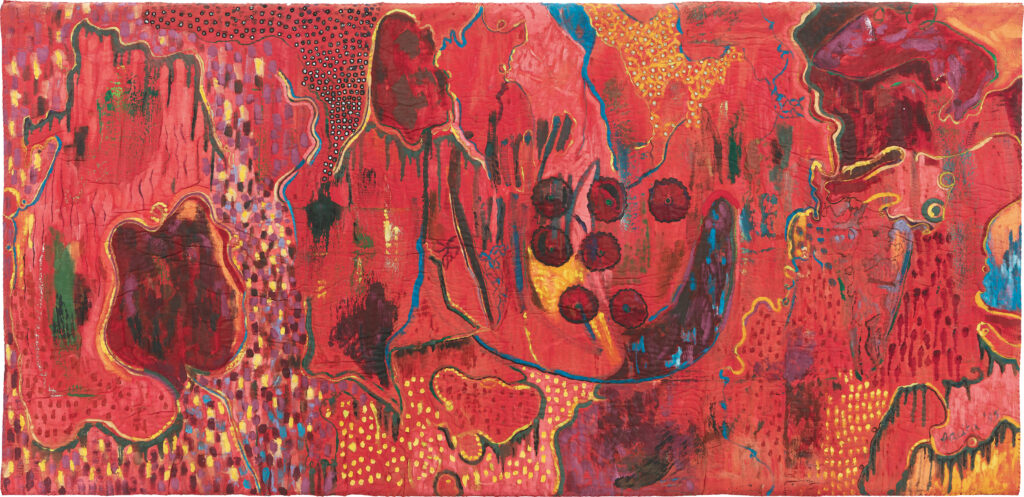
Craft and identity
“Craft Is Art” challenges art world hierarchies and (often gendered) disciplinary distinctions. Fiber artists such as Trude Guermonprez and her former student Kay Sekimachi weave strikingly sculptural forms from silk and monofilament. Pacita Abad, Elizabeth Talford Scott and Joyce J. Scott use quilting, knotting, embroidery and other textile techniques to reflect political and economic histories. Toshiko Takaezu’s organic shapes and painterly glazes played a key role in the midcentury recognition of ceramics as fine art.
“Of Selves and Spirits” highlights themes of portraiture and spirituality as well as artistic practices poised between abstraction and figuration. Elizabeth Murray’s “Joanne in the Canyon” (1990–91) is a swirling, fragmented portrait of celebrated theater director JoAnne Akalaitis. Emma Amos’ “Star” (1982) depicts a leaping silhouette framed by fabric collage. Rose B. Simpson, Kara Walker and Zarina allude to spiritual traditions and cultural archetypes while “Sisters” (2021), a stitched vignette by Tschabalala Self, shows a young woman affectionately embracing a child who stands proudly on her foot.
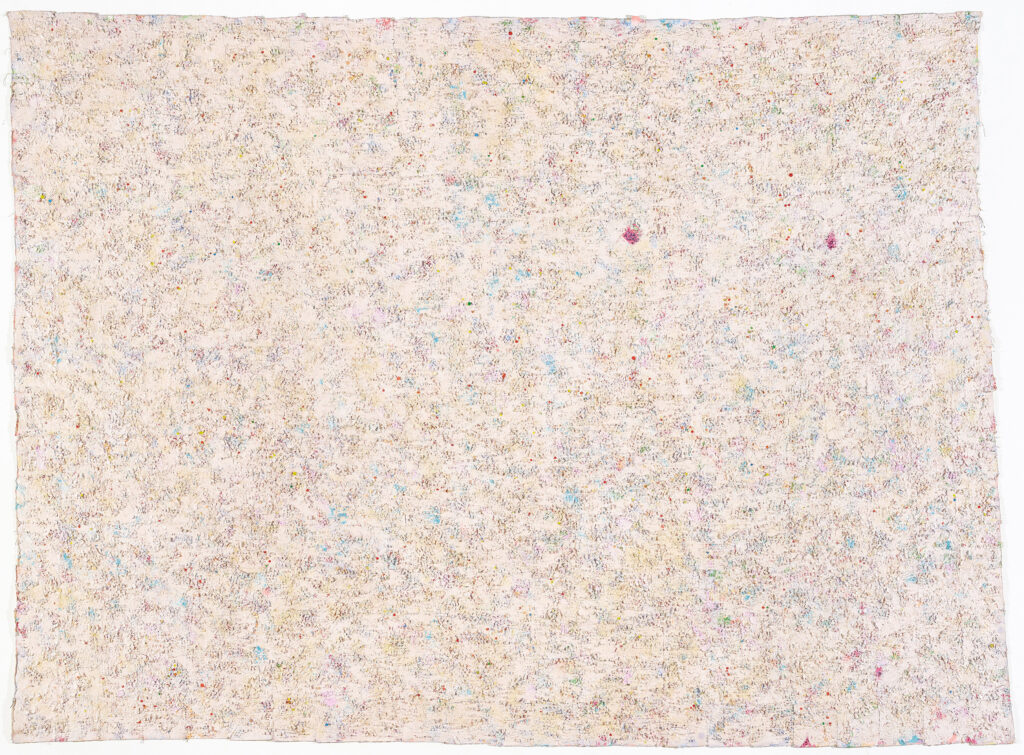
Changing perspectives
In “Disobedient Bodies,” artists critique outdated depictions of the feminine form. Joan Semmel’s “Horizons” (1981) seeks to reclaim the nude from the sexism and taboos of popular culture. Wangechi Mutu’s “drip, drip, drip” (2017) and Cecily Brown’s “The Demon Menagerie” (2019–20) combine sensuous, biomorphic shapes with warm, provocative palettes. “Cut/Slip for Flowers” (2020), by St. Louis–born Suzanne Jackson, is a translucent, skin-like acrylic painting-object that hangs suspended in the air, eschewing canvas or structural support.
Artists in the sixth and final section, “Luminous Abstraction,” explore light as subject, material and environmental condition. Mary Corse’s “Untitled (White Grid, Horizontal Strokes)” (1969) embeds glass microspheres, typically found in painted highway lines, amidst layers of acrylic paint. From a distance, Howardena Pindell’s “Untitled #21” (1978) appears similarly monochromatic but close inspection reveals a rainbow confetti of paper circles, stamped via hole punch. Helen Pashgian’s “Untitled (orange)” (2009) was formed by bending large acrylic sheets. As the viewer changes position, the imposing column seems to glow and fade, to dissolve and resolidify.
“’Making Their Mark’ is about celebrating excellence,” said Shah, who has formed strong friendships with many of the artists featured. “We’ve been able to acquire important, milestone works, but for me, the collection is a tool for telling stories and bringing about social change. It’s about supporting artists in every way possible. That’s what I’m most proud of.”
Organizers, publication and tour
“Making Their Mark: Works from the Shah Garg Collection” is curated by Cecilia Alemani, the Donald R. Mullen Jr. Director and chief curator of High Line Art in New York, and Eckmann.
The exhibition is presented in conjunction with the monograph “Making Their Mark: Art By Women in the Shah Garg Collection” (2023). Edited by Mark Godfrey, an independent curator and art historian based in London, and Katy Siegel, research director at the San Francisco Museum of Modern Art, the volume features scholarly essays on topics relating to the collection; texts by 15 artists about artists who inspire them; and full-color plates showcasing more than 130 works.
The “Making Their Mark” exhibition debuted in New York in fall 2023 and traveled to the Berkeley Art Museum and Pacific Film Archive in 2024. Following its St. Louis iteration, the show will travel to the National Museum of Women in the Arts in Washington, D.C., and to Newfields, the campus of the Indianapolis Museum of Art.
“This show honors a diverse collection of works, united by Komal’s spirit and her support of a manifold array of artistic voices engaging with the legacy of abstraction and figuration,” Alemani said. “It has been a welcome curatorial challenge, to tell a story that aligns the breadth of the collection with each new space, as the exhibition travels. I look forward to discovering the conversation this show sparks at the Kemper.”
Visitors and events
“Making Their Mark: Works from the Shah Garg Collection” will open Friday, Sept. 12, with a panel discussion featuring Komal Shah and curators Alemani and Eckmann. The Q&A will begin at 5:30 p.m. in Steinberg Auditorium. A public reception will immediately follow at 6:30 p.m. in the Kemper Art Museum.
Other events will include an open house for K–12 educators (Sept. 17); a lecture on Joan Mitchell by Siegel (Oct. 26; a collaboration with the Saint Louis Art Museum) and an artists’ panel with Weatherford and Grosse (Nov. 19). An exhibition of K-12 student work created in response to “Making Their Mark” will be on view in Steinberg Hall Dec. 13–20. Public tours in American Sign Language, English, Mandarin and Spanish will take place on select Saturdays and Sundays throughout the fall.
The Kemper Art Museum is located on WashU’s Danforth Campus, near the intersection of Skinker and Lindell boulevards. Visitor parking is available in the university’s east end garage. Regular hours are 11 a.m. to 5 p.m. Mondays and Wednesdays through Sundays. The museum is closed Tuesdays. For more information, call 314-935-4523 or visit kemperartmuseum.wustl.edu. Follow the museum on Facebook, Instagram and YouTube.
Additional support
“Making Their Mark: Works from the Shah Garg Collection” is made possible through the lead support of the Shah Garg Foundation and the leadership support of the William T. Kemper Foundation. All exhibitions at the Kemper Art Museum are supported by members of the Director’s Circle, with major annual support provided by Emily and Teddy Greenspan and additional generous annual support from Deborah Beckmann and Jacob Kotzubei, Michael Forman and Jennifer Rice, Julie Kemper Foyer, Joanne Gold and Andrew Stern, David and Dorothy Kemper, Ron and Pamela Mass, and Kim and Bruce Olson. Further support is provided by the Hortense Lewin Art Fund; the Ken and Nancy Kranzberg Fund; and members of the Kemper Art Museum.
